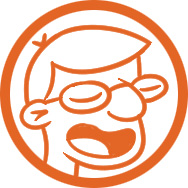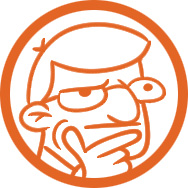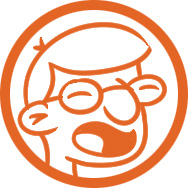Battle System

The most important thing to talk about in any fighting game is its battle system, which includes things such as unique mechanics, speed and pacing, and tuning offense against defense. Street Fighter 6's main system governing every decision is the Drive System, and it's an absolute winner.
Under the health bar for each player is a green gauge featuring 6 blocks. This gauge plays a role in virtually every action both players take at all times. It functions as a way to perform most of your offensive techniques, but at the same time, the gauge decreases when you block attacks, making it important to save your gauge for defense as well. When you run out of gauge, you enter a state called Burnout, which is awful and often round-losing, so it is crucial to not mismanage your gauge. All-purpose gauges like these are not new to fighting games (take, for example, Under Night's GRD System), but this gauge is absolutely foundational to why SF6 is so fun to play.
The Various Drive Techniques

There are three major ways you will be spending your drive gauge for use in offense: Overdrive Attacks, Drive Impact, and Drive Rush.
Overdrives are identical to EX Moves from previous Street Fighter titles, are mandatory for many combo routes, and are one of the only ways you can perform invincible attacks. Drive Impact is a fast, long-range armored attack that crumples opponents if it hits and is unblockable in the corner, but can be countered by your opponent's own Drive Impact (among other things) which earns you an extremely visceral and satisfying slow motion beatdown. Drive Rush allows you to enter a powerful green dash from any cancelable normal (or from a parry stance in neutral), allowing for all sorts of extremely useful combo extensions or safe pressure, not unlike Guilty Gear's Roman Cancel or Street Fighter IV's FADC.

On the defensive side, you can perform the Drive Parry, which is effectively just an "EX block". While holding the parry, your drive gauge will drain but you'll auto-block any attack (including highs, lows, and cross-ups) and gain drive gauge back for everything that hits you. However, if you are thrown while parrying, you'll take extreme damage. If you input a Drive Parry immediately before an attack hits you, you will perform a Perfect Parry, reminiscent of parrying in SFIII: 3rd Strike, freezing the screen and allowing a punish of your choice. You can also perform a Drive Reversal while blocking, similar to V-Reversal from Street Fighter V, to try and push your opponent away while they're attacking you.
The Ebb and Flow of Battle

Much has been written about each of these systems across the year of beta tests and whether they work together in harmony. In my view, it's the most intelligently crafted Street Fighter battle system ever made. Each piece of the puzzle serves an important purpose, but none of the gameplay is prescribed. Instead, player creativity is still sharply valued in order to problem solve on the fly between your large arsenal of powerful options.
You'll start each round with all 6 drive bars, which means unlike many other fighting games, you're at nearly max power level immediately. Your drive gauge replenishes on a timer and during offense, so you'll feel the need to use drive and assert offense first. However, you'll realize a few things very quickly: it is incredibly easy to overspend on your drive, and blocking opponent's attacks takes away huge chunks of your drive, so you'll run out before you expect to.

Once you run out of drive, you'll be in a state called Burnout for the next 20 or so seconds. You'll have no access to any drive techniques at all, you'll take real chip damage from specials and supers, and every single attack you block will do 4 more frames of block stun, leading to brutally long offensive pressure sequences against you. What's worse, if you get Drive Impacted in the corner, you'll get put in a special stun state where they opponent gets a free jump-in combo.
You'll quickly learn that your drive meter is as important as a second health bar. Your eyes will be glued to it (and your opponent's gauge) at all times in the fight. You'll learn which uses of drive they'll feel comfortable doing and which are too risky depending on how much drive they have left. It will inform all your offensive and defensive choices. You will chase people low on drive trying to burn them out, while they try to run away and survive. If you overextend while hunting your prey, the situation can reverse itself incredibly fast.

Most importantly, though, the Drive system leads to true player expression. Risky players will overextend on their drive gauge, expecting to kill you or survive on low drive longer than normal. Defensive players will spend gauge more rarely, choosing to save it for when it's most needed. But the game constantly tempts you to spend drive. What's 1 bar on a parry drive rush to extend your pressure? You've got lots, nothing will go wrong! A small bit of drive to attempt a parry? Sure it didn't work, but you're still fine. And then your opponent strips drive from you with a block string or by attacking you with a super, and suddenly you're questioning all your past decisions. Maybe since you're so close to burnout, you should parry to get drive back? Spend drive to get drive, what could go wrong? Maybe you should just burn yourself out on purpose with an invincible attack, so at least they won't be on top of you at the start of your penalty. Surely they won't block that too.
The game is extremely resilient to situations being solvable for two main reasons: you won't see the same drive/health/super/screen positioning combination very often, forcing you to adapt to what you see based on instinct rather than a spreadsheet, and whether your decision is considered good or bad hinges so fully on what happens in the future (for example, burnout is bad, but not if you play perfect defense for the rest of the round). These two factors mean decision making in SF6 is incredibly fluid. It can be hard to pinpoint exactly one cause for why you lost a round, since it was likely due to many factors that slowly added up over time. But this also means there will be multiple solutions to improvement, leading to an extremely rich game.
Combos

Street Fighter 6 has the most combo variability of any Street Fighter title by a substantial margin. You will need to have multiple combo routes on call depending on many factors, including how much drive you are willing to spend, how much drive your opponent has, how close you are to the corner, and which level of super combo (if any) you'd like to include to boost the damage. Oftentimes, the start of the combo will lock you into certain routes, which means the snap judgment you made under pressure will inform what you can do with the rest of your combo. You will frequently choose the wrong route and either be forced to begrudgingly overspend on super meter to kill an opponent, or underspend and leave them alive. Excellent combo awareness will be amazing to watch and fun to practice.
In most games, you will have just a few BnB combos you've practiced that cover most situations you find yourself in, but the breadth of SF6's combo space makes building this flowchart pretty impractical. Even if such a thing could be constructed, what value you place on the drive meter is a wholly personal choice. If you land a hit on your opponent, should you spend 0, 1, 2, 3, 4, 5, or 6 drive on this combo? The answer could be yes to any of those, and may even shift depending on the matchup you're playing (for example, needing more drive in neutral later against a zoner, so maybe you spend less on the combo now). Even if you have a combo ready for all of those situations, different players will do different things. This obfuscation of what "optimal" means leads to true combo variety in matches.
The combos are both designed with intentionality and super freeform at the same time. Pretty much every character has a "party starter" button they would love to land, as it leads to combos not possible with any other attack (Luke's crouch HP, Manon's back HP, JP's forward HK, for example), but then the game gives you multiple paths into that normal, usually off Drive Rush. If you can't route into that normal in a given situation, you'll still have plenty of choice between taking simple knockdowns, using OD moves to force different kinds of juggles, using supers for burst damage, and more.
Control Schemes

SF6 has three control types: Classic, Modern, and Dynamic. Classic is the standard 6-button scheme you're used to, while the others attempt to lower the barrier of entry for casual players. Modern simplifies the controls to three attack buttons (a generic light, medium, and heavy) and adds a special move button like Super Smash Bros., which lets you perform one button specials (of a developer-chosen strength) or supers at 80% of their normal damage. Dynamic is even simpler than this, allowing you only to control your character via the analog stick while mashing one of three buttons that makes the AI do some action or basic combo based on how close you are to your opponent. Classic and Modern are allowed in all modes, including online play, while Dynamic is relegated only to offline play.
For people who are intimidated by regular special or super move inputs, Modern is a great way to play the game. You will lose access to a couple normals and special moves, since there's only so much space on the controller (exactly which attacks those are varies by character), but you will be able to execute any of your available attacks instantly. You don't even have to "graduate" to Classic if you don't want to, as Capcom has made it clear that Modern is a totally viable way to play the game both online and in their professional tournament series.

For the expert player, Modern controls being allowed to perform one button shoryukens, command throws and supers is a huge advantage. Burnout is considerably less scary when you can do one button super on reaction to Drive Impact. Anti-airing with uppercuts is much easier. Zangief can indeed do one button 720 super with no change to any of the move's properties outside the damage penalty. However, Modern players do have to give up certain normals and specials to accomplish this; depending on the character, this might be a total non-starter or it might be a perfectly reasonable tradeoff.

To Capcom's credit, they seem to have chosen the shortcut specials to be the least abusable version of the move. For example, Zangief's 360 command grab assigned to the Modern shortcut is the short range heavy version, which is much harder to use in footsies or while walking around, limiting its use in the situations where you'd really love a one button command grab. Meanwhile, for people who actually struggle to do 360 inputs at all, including during mixup situations, Modern controls accomplishes its objective perfectly. We will have to wait and see to what extent pro players will switch to Modern and whether its advantages will overcome the main drawback of losing moves.
Lastly, while it's kind of a footnote in the controls discussion, Dynamic is a great inclusion. It has no competitive use at all, but it's an excellent option for turning on when your young nephew visits and he asks about what you're playing. It's almost like watching a mid-level CPU fight, except you can move the character around and choose when it takes actions. Don't forget this mode exists for these types of situations.
Conclusion

I think they've struck gold with the Street Fighter 6 battle system. Is it for everyone? No, I don't think that's possible. If you like games where you can feel safe at certain screen positions for long periods of time, SF6's explosiveness will be at odds with that. It can also be a somewhat tiring game to play, since you're being asked to make many more decisions and cover many more options per round than most other Street Fighter titles.
However, if you like fighting games that don't railroad you into narrow preset paths, where situational awareness is king, and where coming up with creative solutions to problems is rewarded, SF6 will sing for you. And because the core system is so strong and resilient, if a few techniques do prove too degenerate after thousands of players hammer away at it for a year, the developers can easily improve the system with small changes until things are just right.
